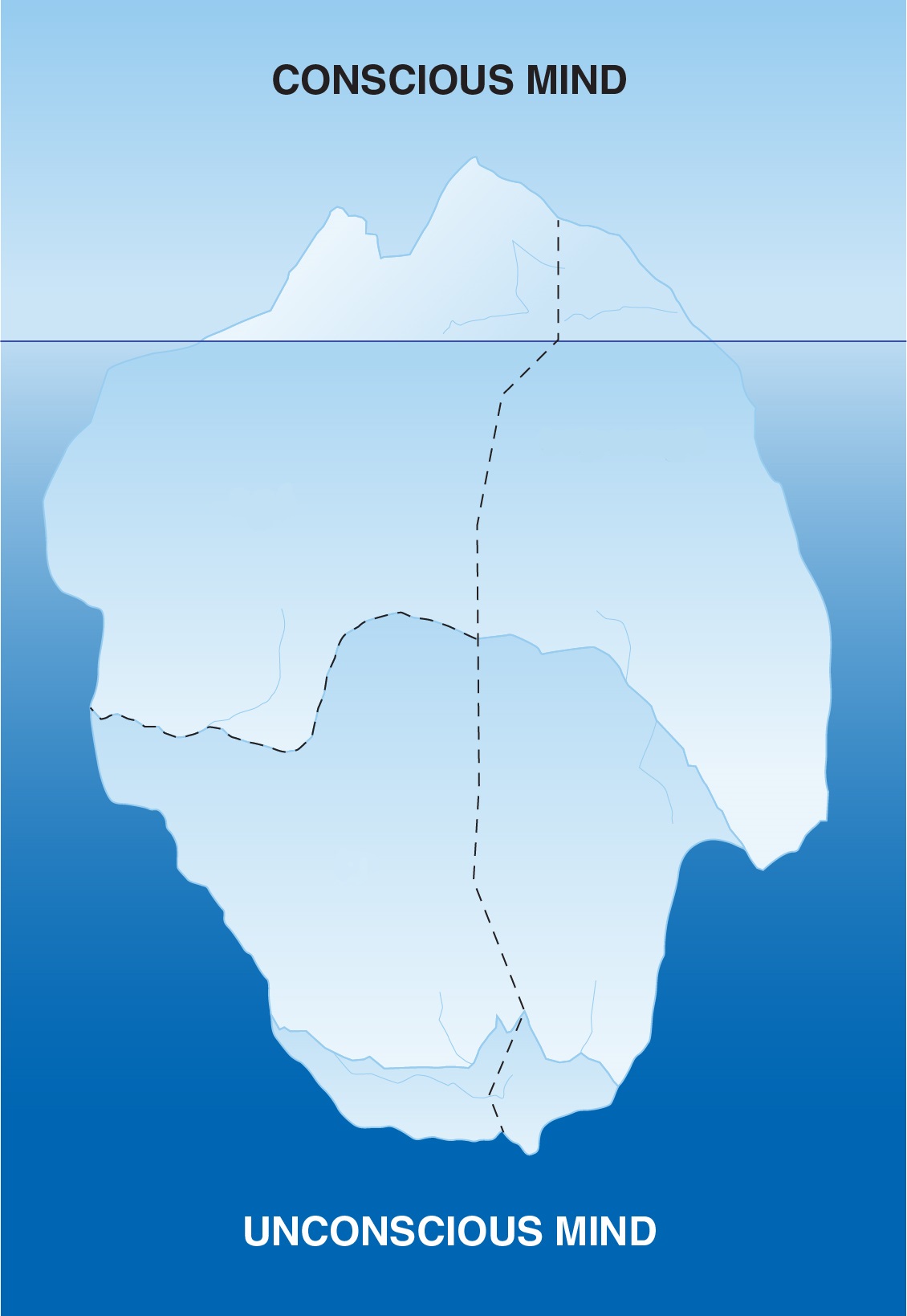Chapter 8. Methods of Psychoanalysis
Learning Objectives

State the goals of psychoanalysis.
Describe the major methods used in a psychoanalytic therapy session.
Review 1
Review 1
Select the NEXT button to continue with the Review.

1. According to Freud, much of our behavior is motivated by conflicts between the three components of our personality. In this illustration, our personality is represented by an iceberg floating in water, with the unconscious part of our personality hidden below the water line.
Review 1
Review 1
Select the NEXT button to continue with the Review.

2. These personality components are called the id, ego, and superego.
Review 1
Review 1
Select the NEXT button to continue with the Review.

3. These conflicts within our personality have their roots in our childhood experiences, and are stored in our unconscious.
Review 1
Review 1
Select the NEXT button to continue with the Review.

4. Psychoanalysis attempts to uncover these conflicts and resolve them.
Review 2
Review 2
Select the NEXT button to continue with the Review.

In a typical psychoanalysis session, the analyst would try to help you, the patient, relax and be open to your true feelings. Perhaps you would sit facing away from the analyst, or even lie on a couch.
The analyst might use the method of free association—encouraging you to say the first word or thought that comes to mind.
Review 2
Review 2
Select the NEXT button to continue with the Review.

What if your mind suddenly goes blank, or you pause to “censor” a thought before you speak it, or you switch quickly to a different topic?
The analyst might treat any of these events as a sign of resistance—an important step in the analysis. Because resistances indicate that these issues are creating anxiety for you, they may point to unresolved conflicts that need attention.
Review 2
Review 2
Select the NEXT button to continue with the Review.

The analyst would provide interpretation of your resistance, and might also interpret the hidden meaning of your dreams and other behaviors. For example, if you repeatedly show up late for therapy, the analyst might interpret that as indicating hidden hostility toward authority figures.
Review 2
Review 2
Select the NEXT button to continue with the Review.

At some point, you may begin to show transference—redirecting your emotions from unresolved conflicts toward the analyst, rather than toward the person who is the source of your conflicts (often a parent).
The analyst would probably be pleased to note this transference, because it brings the emotions out in the open where you can deal with them.
Review 2
Review 2
Select the NEXT button to continue with the Review.

Across many psychoanalytic therapy sessions, the analyst would try to help you gain insight into the unconscious conflicts that underlie your current problems.
After bringing these conflicts to the surface, the analyst would provide a supportive environment for you to work through your emotions and resolve the anxieties that have been troubling you.
Practice: Techniques and Progress Markers
Practice: Techniques and Progress Markers
Roll over each item to see a brief description of that type of technique or issue.
Free association
Resistance
Interpretation
Transference
spontaneous reporting of all thoughts and feelings as they come to mind, as a way of revealing unconscious memories and anxieties
Example: A college student might say, “books...exams...tense...failure..."
blocking anxiety-producing memories from reaching conscious awareness
Example: During a session, a patient might pause unexpectedly, or change the subject, or forget what was about to be said.
an analyst's explanations of the patient’s dreams, slips of the tongue, and other behaviors to help the patient gain insight
Example: If the patient continually forgets to repay a loan from his or her parents, that might indicate hidden resentment toward the parents.
the patient’s redirecting emotions from other relationships (such as love or hatred of a parent) onto the analyst
Example: The patient might “fall in love” with the analyst, or become excessively rebellious.
Quiz 1
Quiz 1
Drag each term to the appropriate description. When all the terms have been placed, select the CHECK ANSWER button.
blocking anxiety-producing memories from reaching conscious awareness
spontaneous reporting of all thoughts and feelings as they come to mind, as a way of revealing unconscious memories and anxieties
therapy that attempts to give patients self-insight by bringing previously repressed feelings into awareness and interpreting them
the patient redirecting emotions from other relationships (such as love or hatred of a parent) onto the analyst
the analyst providing explanations of the patient’s dreams, slips of the tongue, and other behaviors
Quiz 2
Quiz 2
Match the terms with the scenarios by dragging each colored circle to the appropriate gray circle. When all the circles have been placed, select the CHECK ANSWER button.
Conclusion
